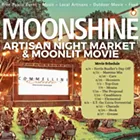It wouldn't be surprising for something of this year's election to eventually find itself into the work of the politically aware Alison Saar, who will speak on Tuesday and Wednesday as part of this year's Visiting Artists Lecture Series at EWU, SFCC and the MAC. While Saar's work is politically self-aware, her creations are rooted in the personal, which then branches out into something akin to allegory.
From a recent show at L.A. Louver gallery, for example, Saar's "Brood" is a fiberglass figure atop a rickety tower of children's chairs, the remnants of a pomegranate dripping down the figure's legs. It points to the Greek myth of Demeter -- the inconsolable mother of the abducted Persephone -- a timeless allegory about love, loss, coming of age, spirit, sustenance, and the dualistic nature of life and learning. We can, on a personal level, identify with the loss of loved ones or perhaps the loss of fertility that comes with age, yet we can also identify with the powerful Mother Earth figure.
Saar's work is wonderfully accessible, yet otherworldly too, often invoking both a gut reaction and a mental sigh of satisfaction. Greek mythology informs her work, but so do Egyptian mummies, Chinese frescoes and the Pre-Columbian and African art that were part of the conservation work of her father, Richard Saar. Her love of art history and her dogged pursuit of learning landed her a job in a Los Angeles gallery at age 18. At nearby Scripps College, she studied African and Caribbean art, contemplating following in her father's footsteps, eventually earning a Masters of Fine Arts from the prestigious Otis Art Institute, where her art career began in earnest.
Saar's mother had an influence on her as well. Betye Saar was a groundbreaking artist -- yet where the elder Saars' work cut into African-American stereotypes (such as Aunt Jemima) to address such things as gender equity and race, the daughter is less explicit, more metaphoric.
"I was living two lives," Saar recalled in a May interview with writer Stuart Low. "In grade school, I was always considered white. At home, I was drawn strongly to African-American culinary traditions and music." Saar, whose multi-ethnic heritage underscores the complexities of "race," adds, "Now those ethnic boundaries are less rigid for me, and also, I think, for a lot of other Americans."
That tendency to appeal to the universal can be seen in Saar's 2006 commission for the Harriet Tubman sculpture in southern Harlem, not far from where Saar was artist-in-residence at the Studio Museum. A grim-faced Tubman strides forth, her face streamlined yet familiar. Her skirt is carved in low relief with faces, as well as symbolic items like locks, a shackle, bottles, the sole of a shoe, while behind her the dress morphs into a trail of thick-limbed roots. The sculpture -- which is inscribed, "Let my people go" -- does not face north where freedom lay for many whom Tubman helped in the Underground Railroad. Instead it faces south, suggesting that there is work still to be done, whether it's something small and singular, like casting a vote, or something monumental, like leading a nation of people on a journey toward hope.
Allison Saar will speak at EWU's Art Department Auditorium in Cheney on Tuesday, Oct. 21, at noon and at SFCC's SUB, Rooms A-B, at 7 pm; and at the MAC, 2316 W. First Ave., on Wednesday, Oct. 22, at 11:30 am. Free. Call 533-3035.
















